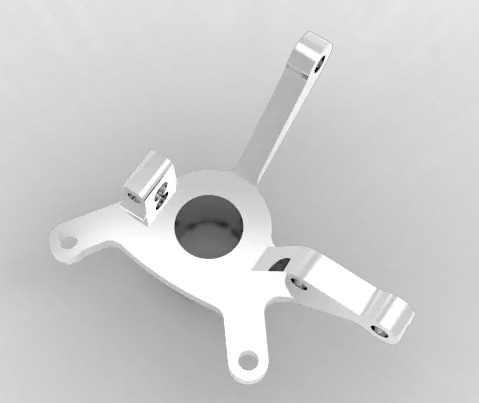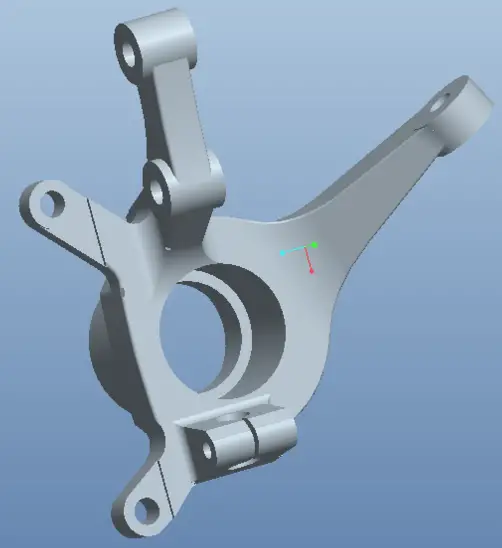A steering knuckle is one of the most important component in automotive suspension system. This rather odd looking mechanism coordinates the steering mechanism of a vehicle with the suspension system and then the actually wheel. Depending on the vehicle and suspension design, the steering hub or spindle will also vary slightly. In the case of all wheel drive or front wheel drive vehicles, this device will also be the location where the power steering comes into play as well.
The vehicle wheel will mount to the exterior portion of the steering knuckle by attaching with a spindle or a hub.
The suspension inboard connection and the tie rod will attach through the use of special mounts that will still allow the knuckle to pivot when the steering wheel is turned. To put this in simpler terms, the steering knuckle holds the wheels in place on the vehicle and lets you change the direction that you are driving.
These steering knuckles are very durably, almost always outlasting the lifespan of the vehicle components that they are attached to. Usually the only way that they can become damaged is through a very high speed or direct collision with extreme forces involved.
In a non-drive suspension, the brake drums and rotors will attach to the knuckle by way of a spindle rather than a hub. The wheel assembly then attaches by simple lug studs that will usually already come with the knuckle when purchased. Everything rotates smoothly and easily along this simple spindle.
In drive suspension systems, a hub takes the place of the spindle. The hub attaches to the drive mechanism which will already have the mounting studs needed to attach to the brake assembly or wheel, depending on the vehicle design. When everything is assembled properly, the wheel rotates based on the direction provided by the drive shaft. The steering knuckle would only turn freely when it is detached from the differential or transaxle.
Due to the various different components involved, a steering knuckle is also sometimes referred to as an “upright”, “wheel carrier”, “hub”, or “spindle”.
This rather odd looking mechanism coordinates the steering mechanism of a vehicle with the suspension system and then the actually wheel. Depending on the vehicle and suspension design, the steering hub or spindle will also vary slightly. In the case of all wheel drive or front wheel drive vehicles, this device will also be the location where the power steering comes into play as well.
The vehicle wheel will mount to the exterior portion of the steering knuckle by attaching with a spindle or a hub. The suspension inboard connection and the tie rod will attach through the use of special mounts that will still allow the knuckle to pivot when the steering wheel is turned. To put this in simpler terms, the steering knuckle holds the wheels in place on the vehicle and lets you change the direction that you are driving.
These knuckles are very durably, almost always outlasting the lifespan of the vehicle components that they are attached to. Usually the only way that they can become damaged is through a very high speed or direct collision with extreme forces involved.
In a non-drive suspension, the brake drums and rotors will attach to the knuckle by way of a spindle rather than a hub. The wheel assembly then attaches by simple lug studs that will usually already come with the knuckle when purchased. Everything rotates smoothly and easily along this simple spindle.
In drive suspension systems, a hub takes the place of the spindle. The hub attaches to the drive mechanism which will already have the mounting studs needed to attach to the brake assembly or wheel, depending on the vehicle design.When everything is assembled properly, the wheel rotates based on the direction provided by the drive shaft.The steering knuckle would only turn freely when it is detached from the differential or transaxle.
Due to the various different components involved, a steering knuckle is also sometimes referred to as an “upright”, “wheel carrier”, “hub”, or “spindle”.
Download the CAD model of a Steering knuckle.




